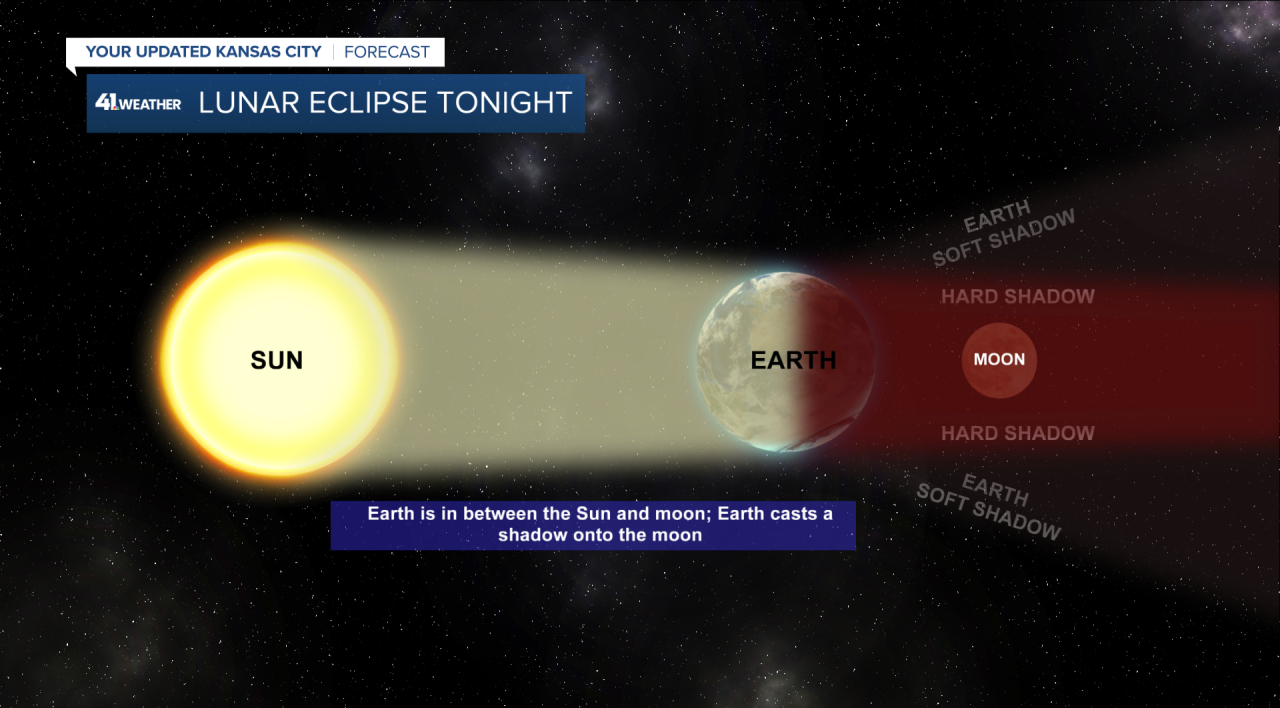Those looking to the skies early Friday morning will have the chance to see a once-in-a-lifetime cosmic phenomenon.
Just after 2 a.m. ET Friday morning, the moon will move into the Earth's shadow, causing a nearly total lunar eclipse and casting a red hue on the lunar landscape
According to the National Weather Service, Friday morning's lunar eclipse will last nearly 3½ hours, the longest lunar eclipse in 580 years.
NASA says Friday's eclipse will be visible around the globe, from North and South America, Eastern Asia, Australia and the Pacific Region.
In the U.S., the eclipse will begin just after 2 a.m. ET and reach its peak around 4 a.m. ET.
At that point, 95% of the moon will be red in Earth's shadow. A tiny sliver of the moon will still be illuminated.

The partial eclipse will end about an hour later, and the moon will move out of the Earth's shadow completely by 7 a.m. ET.
Look to the western horizon to catch a glimpse of the eclipse and check local weather reports to gauge visibility standards.

This story was originally published by Katelyn Brown and Wes Peery on Scripps station KSHB in Kansas City, Missouri.



